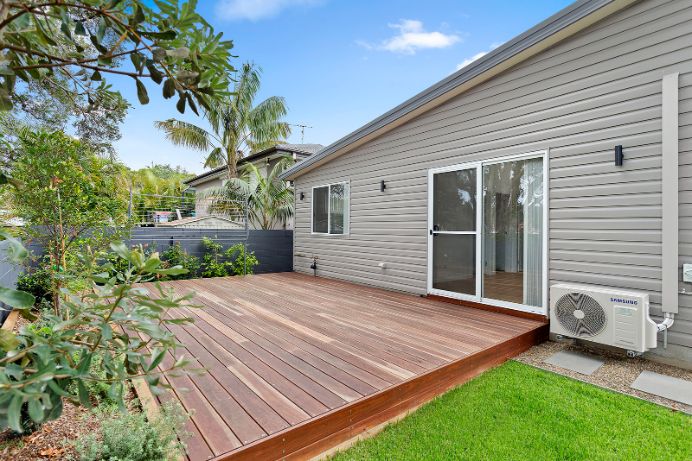



Get in touch
with us today…
Contact us for a private viewing to see a granny flat in your area today!

Employment Opportunities
We are always open to hiring motivated and creative workers who share our same passion to provide high-quality dwellings and attentive customer service.
If you are interested, please submit your details and resume.
Is a Granny Flat Considered a Secondary Dwelling? What You Need to Know

A granny flat is a great option for homeowners looking to add extra living space or a second rental income to their property.
These self-contained dwellings can be used for a variety of purposes, such as housing relatives or providing a spare bedroom for guests. The term ‘secondary dwelling’ is often used interchangeably with granny flats, leaving people confused about the potential differences in council legislation.
So, what exactly is a secondary dwelling, and what are the rules and regulations surrounding them in New South Wales, Australia? In this article, we’ll be exploring the need-to-know granny flat info, including council regulations, and whether they count as secondary dwellings. If you’re a homeowner looking to add a granny flat to your property, this guide will provide you with all the information you need to make an informed decision.
Are Granny Flats considered secondary dwellings?
In New South Wales, a granny flat is in fact considered a secondary dwelling. According to the New South Wales government, a secondary dwelling is defined as a “self-contained dwelling located within, attached to, or separate from another dwelling on the same site”.
Under this definition, a granny flat is indeed a secondary dwelling, as it can be an entirely self-contained dwelling. Compare this to a backyard studio or lifestyle pod, which are deemed ‘non-habitable’ dwellings as they cannot contain a kitchen or laundry facilities.
What’s more, in most cases you don’t require any additional council approval to build a granny flat on your property. You simply need to obtain a Complying Development Certificate (CDC) to be granted authorisation.
Granny flats are becoming increasingly popular with homeowners looking to create an additional source of income. With families relocating, the popularity of Airbnb, and a very competitive rental market, many homeowners are considering granny flats a worthwhile investment.
Remember what we said about not needing council approval? This significantly reduces the amount of time it takes to plan and construct a granny flat on your property; you can get authorisation to build a secondary dwelling in as little as 10 days and begin the construction process from there.
How many secondary dwellings can be built on one lot?
In short: you can only build one secondary inhabitable dwelling on your property. Other small dwellings, such as studios or lifestyle pods, are permitted, as these are considered ‘non-habitable’ dwellings.
There are NSW council approvals, regulations, and restrictions to consider before taking action and planning a new addition to your property. Different councils may also have legislation for local properties, so we urge you to check out your local council’s website to answer region-specific questions.
If you would like to learn more, the experienced team at Granny Flat Solutions can guide you on this. We can also advise you on what can and cannot be built on your property.
Council regulations to consider before building a Granny Flat
A friendly (and very fortunate) reminder: You may not need council approval to construct a granny flat on your residential property thanks to the AHSEPP — State Environmental Planning Policy (Affordable Rental Housing) — which was introduced in 2009.
In saying that, there are still regulations and minimum site requirements that need to be adhered to for the successful planning and construction of a granny flat in New South Wales. We’ve outlined them for you below:
Granny Flat Area
- There is a limit of one granny flat per lot.
- Your granny flat must not exceed the maximum internal space of 60 square metres.
- Your granny flat must adhere to the maximum height of 8.5 metres.
- You can build a two-storey granny flat so long as it adheres to the rear and front setback requirements.
Property Area
- It’s recommended to have a minimum land area of 450 square metres.
- Your granny flat must have a courtyard space of 24 square metres.
- You must maintain a 12-metre width at the building line of your property’s primary dwelling. If your property cannot meet this requirement, it may be worth considering attaching the granny flat to your main house.
- You must keep a distance of at least three metres from any existing trees that have a height of more than six metres.
Development Potential
A Section 10.7 is a ‘Planning Certificate’ that gives information about your property’s zoning, development potential, and detailed restrictions. Previously known as a ‘Section 149 Certificate’, this document can be found in your contract of sale. Among other details, section 10.7 will tell us if the property is:
- Bushfire affected
- Flood affected
- Heritage listed
Finding The Right Property for Your Granny Flat
If you’re in a position to purchase a new or secondary property and you’re considering building a Granny Flat, we’ve got you covered. Granny Flat Solutions offers a unique pre-purchase on-site evaluation service, completely free of charge and obligation-free, to determine the feasibility of building a secondary dwelling on your property.
We’re ready to get started when you are. If your property is primed for a granny flat addition, our ‘Getting Started’ guide will walk you through all the necessary steps for constructing a successful secondary dwelling.
We also have a wide selection of two-bedroom and one-bathroom granny flat floor plans to suit any occupant, from ageing family members to young tenants.
Ready to start your building journey? Chat to our team of experts today and get a FREE personalised quote
Find Out More
“Experience the difference for yourself.”
Call 02 9481 7443 or contact us online now to book your free site inspection and quote.







